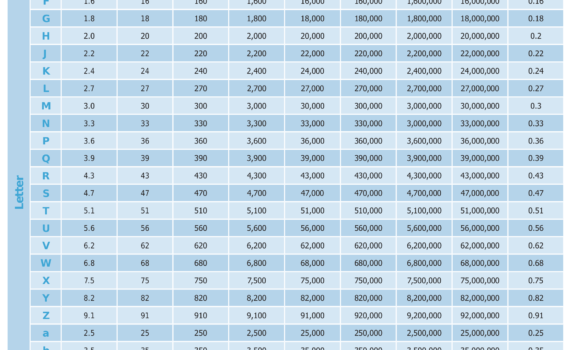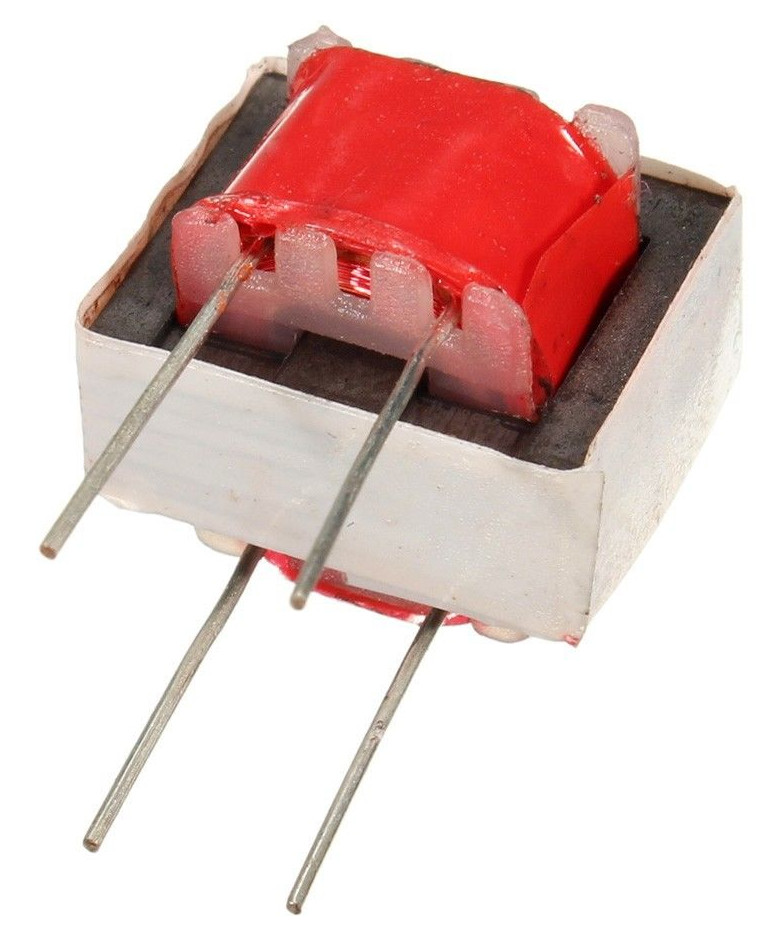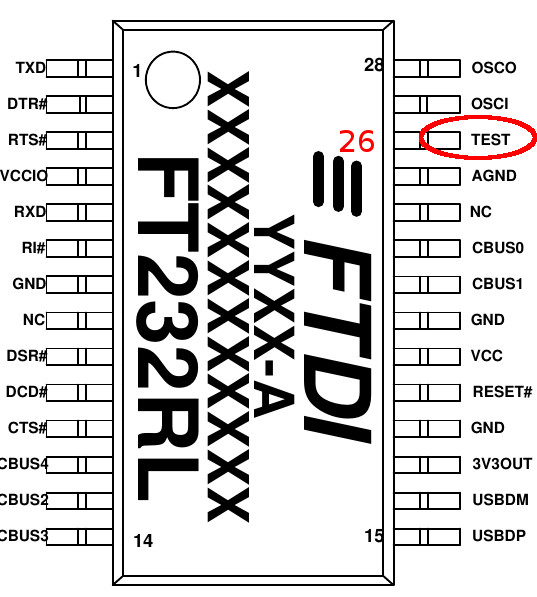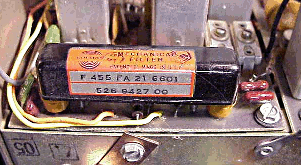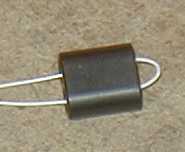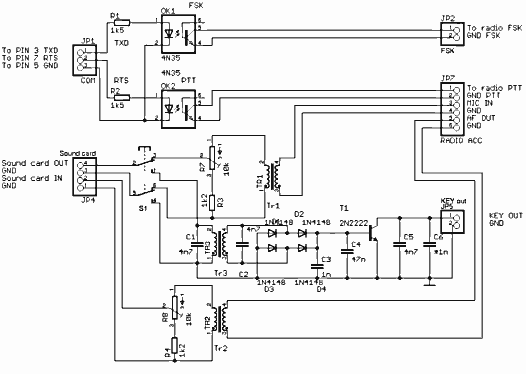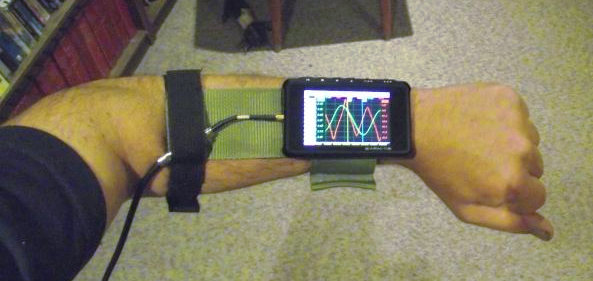Chip SMD capaacitors can be marked with EIA 198 two digit code to show the capacitance of the part. Chip sizes 0805 to 3333 are usually marked using laser or ink printer. The system does not degrade the ceramic surface or induce microcrack in the part. If a part has […]
Technical Topics
Small, cheap and widely available chinese transformers are frequently used in digimode interfaces, however the documentation is very poor. Both primary and secondary consists of 800 turns of enameled 0.06 mm copper wire wound with double wire. It has DC resistance of 135 ohms +/- 20% and inductance of 290 […]
The TinyKeyer
the (possibly) World's Smallest Fully-Featured CW Keyer with Computer Support
Introduction
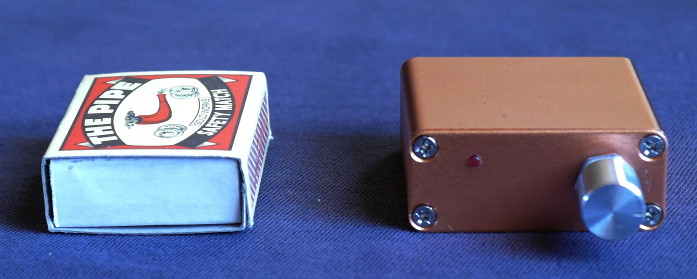 This keyer, based on Arduino design, employs the famous K3NG code. It can be used with any Windows/Linux/Mac logging or contesting software with Winkeyer USB (K1EL) support. The credit & big kudos goes to Anthony Good (Goody), K3NG, who did the tremendous work. It is a very small unit (outer dimensions 45 x 45 x 18.6 mm, appx. 1.8 x 1.8 x 0.73 in) which does not have any fancy options (a zillion of buttons, psychedelic flashing LED lights or cockatoo colored displays). It is intended for regular CW work and contesting with computer support, most of functions should be adjusted and operated via the computer. For standalone work an acoustic menu in command mode is used. Otherwise, only speed control knob and a mini LED indicating the command mode is on the front panel, nothing more.
This keyer, based on Arduino design, employs the famous K3NG code. It can be used with any Windows/Linux/Mac logging or contesting software with Winkeyer USB (K1EL) support. The credit & big kudos goes to Anthony Good (Goody), K3NG, who did the tremendous work. It is a very small unit (outer dimensions 45 x 45 x 18.6 mm, appx. 1.8 x 1.8 x 0.73 in) which does not have any fancy options (a zillion of buttons, psychedelic flashing LED lights or cockatoo colored displays). It is intended for regular CW work and contesting with computer support, most of functions should be adjusted and operated via the computer. For standalone work an acoustic menu in command mode is used. Otherwise, only speed control knob and a mini LED indicating the command mode is on the front panel, nothing more.
The Arduino Nano Rev. 3 board (initially a product of US company Gravitech) with FT232RL FTDI USB to Serial communication chip may have a significant issue that makes some Arduino boards not readable from the computer. The reason? The FTDI chip has ungrounded pin 26 which turns the FT232 into […]
FILTERED OUT FOREVER For many radio amateurs, it’s the end of an era: Rockwell Collins, which designed and manufactured mechanical filters for more than two generations of hams, has discontinued the filters’ production. The company posted on its website: “Over the past several years, we have seen a dramatic reduction […]
Like many others, I have noticed an ugly, scratchy sound while using my Vibroplex Presentation bug. The unwanted artifact is affected by the contact setting but it is impossible to remove this completely. This problem is noticeable mostly with new “fast” transceivers like K3. My idea that this sound is […]
10 mm dia Coaxial Cable attenuation Aircom Plus RG 213 U H 2000 Flex Ecoflex 10 Ecoflex 10+ H 2010 MHz dB/100 m dB/100 m dB/100 m dB/100 m dB/100 m dB/100 m 5 0,9 0,8 0,9 7 1,0 0,97 10 1,2 […]
Do a single loop through the core windows and measure the impedance with some sort of analyzer. Even an MFJ259B with a short connection to the jack will work well for this. If X=R someplace much higher, you can be sure it is a different mix. The Q=1 frequency, where […]
Many years ago I wanted to test RTTY and the new digital modes. Not too seriously, with a simple interface in KISS (Keep It Simple Stupid) style. There is nothing to improve, except my awful PCB design matched to the box I discovered in my junk store. For AF isolation […]
While working on antennas some people have a bad experience with the antena analyzer dropping from the tower etc. An useful solution would be to attach some kind of lanyard (cord, line) and then have the loop end over your head. That way, if this unit were to slip out of a pocket it would just hang at the end of the lanyard. I was also afraid of dropping the unit, or putting strain on the antenna connector of my SARK-110. Here is the solution.
